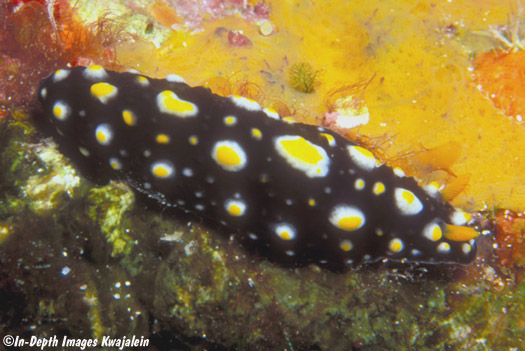
Phyllidia madangensis is now found fairly commonly in the Marshalls, although for some years, none were observed. Most have been seen exposed on rocks on the seaward reef of Kwajalein Atoll, but they occur on lagoon reefs as well. John and Lynette Flynn record the species eating yellow sponge at Rongelap Atoll. It is another member of the group of apparent Mullerian mimics in the P. varicosa group.
The more I see of these animals, the more confused I get. According to Brunckhorst (1993), there are several external characteristics that distinguish P. madangensis from the very similar P. carlsonhoffi. The easiest of these things to check is the absence of a longitudinal dark gray to black line running down the foot sole in P. madangensis and its presence in P. carlsonhoffi. Of course, to check this you need the specimen or a photo of the sole of its foot. Other reported differentiating characters of P. madangensis include the presence of a small rounded tubercle anterior to each rhinophore pocket and fewer large middorsal warts with more intervening black space. P. carlsonhoffi lacks the rounded tubercles anterior to the rhinophoral pocket and tends to have more dorsal warts with large ones alternating with small ones.Well, the specimens on this page were all checked when photographed and found to have no line on the foot sole, so they cannot be P. carlsonhoffi. Nor can they be Phyllidia tula or P. varicosa, which also have black lines on their respective foot soles. They do not look like P. picta , another similiarly colored species that lacks foot sole lines. That leaves P. madangensis--unless there are still more species out there we do not yet know about. Yet none of these specimens on this page have the other external characters of P. madangensis--no rounded tubercle on the anterior edge of the rhinophore pockets and rather crowded dorsal warts that often have intervening small ones. Then there are the compound warts. The first specimen below I would have put in with Phyllidia tula, except that they had no dark line of the sole of the foot. Yet we have also found plenty of specimens without foot lines but with smooth warts, like the second through fifth photos below. What gives? One possibility, I suppose, is that the line on the foot sole might not mean much after all.

The specimen below was found exposed on the Kwajalein Atoll seaward reef at a depth of about 12m on 18 October 2008.
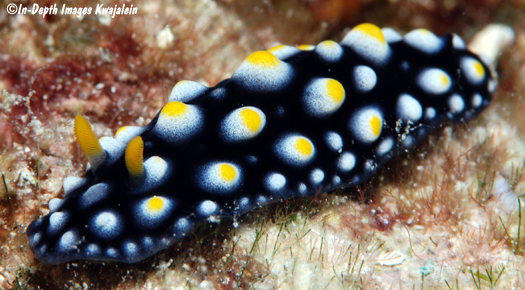
The specimen below was under a rock on a Kwajalein lagoon reef at a depth of about 6m on 26 May 2009. Look at all those small warts roughly alternating with the larger dorsal ones, which is supposed to be a characteristic of Phyllidia carlsonhoffi. Yet I can guarantee it had no line on its foot sole.
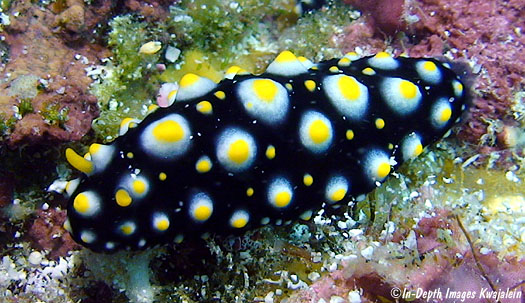
The specimen below was found on Kwajalein's seaward reef on 26 February 2007.
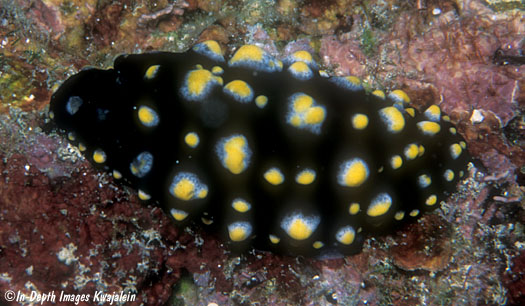
This one was one of six found under rocks on a shallow Kwjalein Atoll lagoon reef at depths of 2 to 3m on 13 September 2009. Alas, I was so focused on the Phyllidia that I did not notice the tiny specimen of Tenellia sp. e432 just in front of it on the lower left side of the photo.
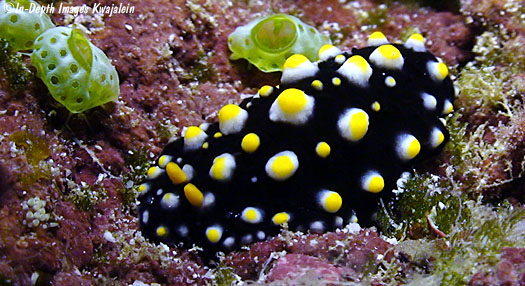
One of the characteristics originally described for this species is a mostly dark gray foot with lighter margins and no darker line running down the sole. The two photos below show the top and bottom of a specimen observed on 21 September 2009.
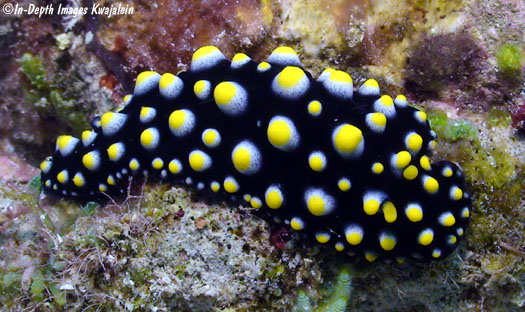
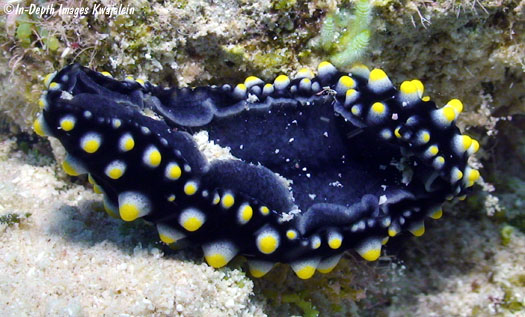
The specimen below definitely lacked a line on the bottom of the foot. It was observed on a Kwajalein Atoll seaward reef, exposed on the slope at a depth of about 20m on 18 April 2010.
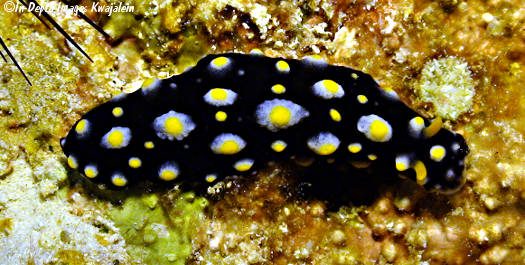
Another pair of specimens that appear to be this species. The larger individual was verified to have no black line on the foot bottom (second photo below).
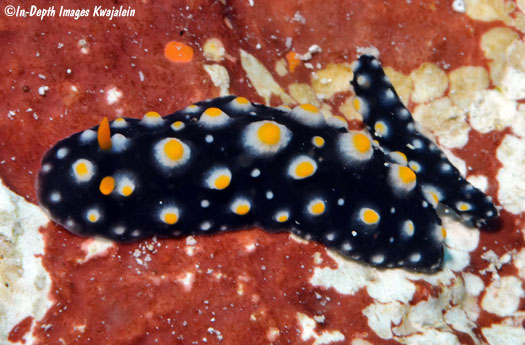
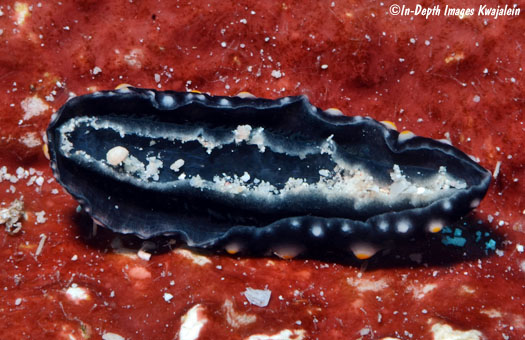
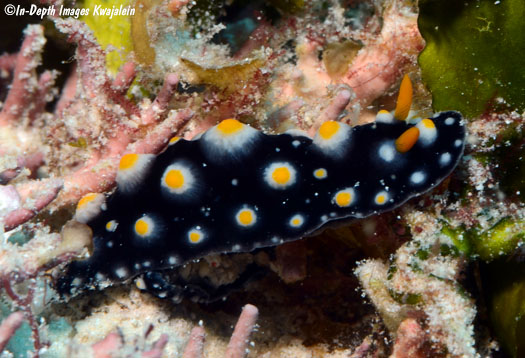
Created 25 December 2006
Updated 12 June 2021